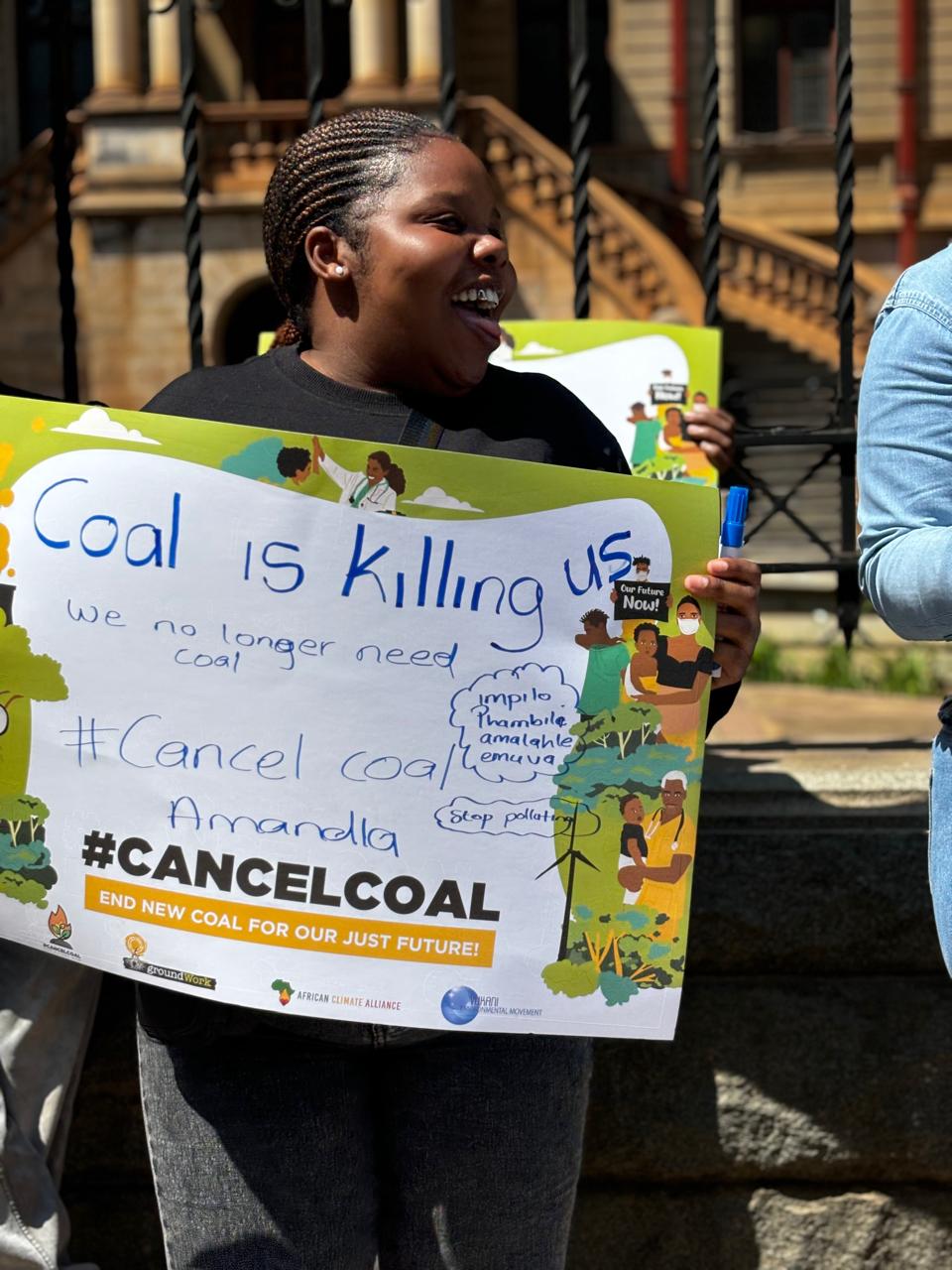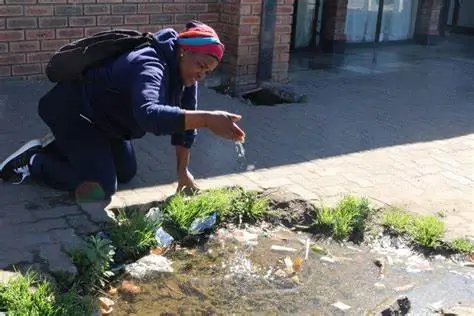A post,
Tourists return to KZN south coast, but water problems persist, first appeared on Groundup.
The main beachfront at Margate has improved thanks to the efforts of residents and local businesses, but municipal infrastructure, such as water pipes, lie exposed and vulnerable to breakage and vandalism. Photos: Steve Kretzmann
Efforts by residents and businesses on KwaZulu-Natal’s south coast are slowly turning parts of the area back into an attractive tourist destination.
This is despite the continued failure of water supply and reticulation under the Ugu District Municipality.
People in the wealthier coastal strip are able to install backup systems, but the poorer inland areas remain at the mercy of intermittent or no water supply.
When water was cut-off for much of the KwaZulu-Natal south coast for days at the start of the December holiday season in 2016, it marked a low point for the area’s main holiday destination of Margate. Crime and drug abuse were also taking hold.
When GroundUp visited in the December holidays from 2017 to 2019, the main business district and beach area were marred by litter, broken glass, empty storefronts and urban decay.
A visit earlier this month revealed a much cleaner and seemingly safer town, although infrastructural problems such as exposed water supply pipes and water and sewage leaks were still evident.
Efforts by local residents and businesses to restore Margate as an inviting destination for holidaymakers appear to be paying off.
Front office manager of the 73-unit Santana Holiday Resort in Margate, Kitty Welthagen, said the past December period was “really good”. Welthagen said it was the first time they’d been fully booked since the Covid pandemic. “It seemed like everyone needed a break,” she said.
The holiday resort is fully booked for this Easter weekend. Water outages are less frequent. Santana, like almost all surviving accommodation establishments, has invested in water tanks (holding 38,000 litres) to see them through outages.
Margate Sands, a 63-unit complex in the heart of Margate, is also fully booked for Easter according to Pearl Susha at the reservations office.
Susha said their December occupancy was at 98%, due to “some cancellations” after news spread that some people got a stomach bug blamed on pollution at the beach.
Margate Sands has also installed water tanks. Susha said outages have become less frequent and are shorter.
She said civic organisation Tidy Towns had significantly contributed to cleaning up the beachfront and the town.
Local Wakefields estate agent Wane Lowson also said the town had started “coming right” about two years ago, which is about when Tidy Towns was established.
Lowson said people from “up-country” were looking for holiday homes again, especially since “a lot of people” had put in water storage tanks for when taps run dry.
Local businessman Stephen Herbst, one of the “drivers” of Tidy Towns, said water outages in Margate date back to 1998, when he was in high school, but are now quite rare. Water outages in Ramsgate, a few kilometres south along the coast, and down to Port Edward, are more common. These areas are on a different distribution system.
Herbst, who owns a clothing and an air conditioning business, set up his own water storage systems about ten years ago when there were water outages “every other month”.
He said most businesses, especially those catering for tourists, use a combination of water tanks and boreholes to mitigate municipal water outages.
Ruin and repair
Municipal water supply outages became critical in the December 2016 holiday season when reportedly disgruntled municipal staff sabotaged the water supply system during a dispute over pension funds. Sabotage of the water supply system appeared to continue sporadically whenever there were disputes between workers and the municipality, up until at least 2021.
Herbst said that in a bid to rescue Margate and surrounds, Tidy Towns started working with the Ugu District Municipality and speaking to workers about the economic impact of sabotaging the water supply – how it led to a decline in job opportunities and damaged their children’s prospects.
Tidy Town’s efforts to fix and maintain public areas using members’ expertise and donations of materials to fix infrastructure such as Margate Main Road have helped revitalise the holiday destination, said Herbst.
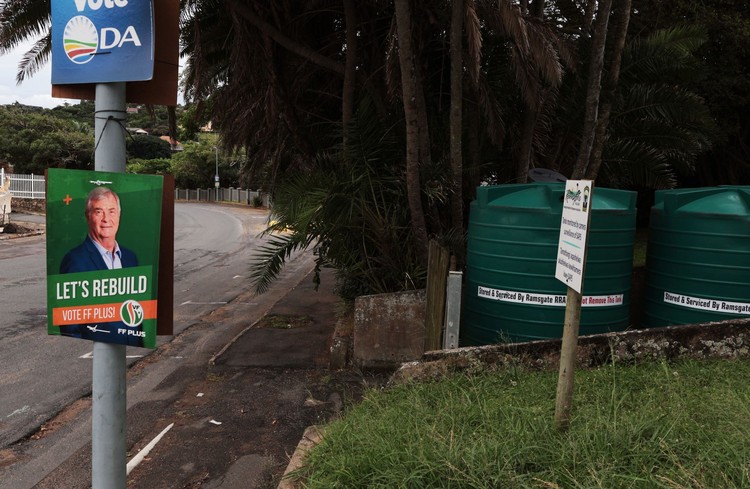
Water storage tanks along the main road in Ramsgate supplied by the residents and ratepayers’ association are regularly filled by water trucks despatched by the Ugu District Municipality. Local residents and small businesses obtain water from these tanks during water outages.
Problems down south
In Ramsgate, adjoining Margate to the south, establishments such as the famed Waffle House say visitors are returning and they had a very busy summer season, but water outages persist.
Ward councillor Alan Bosch, in Ray Nkonyeni Local Municipality, said Ramsgate was at the end of the system supplied by the Mzimkhulu River.
This is the Bhoboyi water supply system (WSS) run by Ugu District Municipality. The water is purified at the Bhobhoyi water treatment works inland of Port Shepstone.
“We’re the last on the water line, so when there’s any problem on that line, we end up with no water,” Bosch told us in early March, after five days without a water supply.
Further south, Southbroom on the Umtamvuna water supply system suffers water outages for three to four days at a time. Although 30-million litres of water is treated per day in the Umtamvuna system, whenever there is loadshedding it cannot be pumped to the reservoirs. Southbroom is a well-off area and many households have their own storage systems.
The large number of independent water storage systems set up in towns like Margate, Ramsgate and Southbroom has meant that when municipal water supply is restored, it first pours into people’s tanks, mostly situated in the lower-lying, richer areas along the coastal strip. This leaves people in the poorer, higher lying areas without water or a delayed restoration of supply.
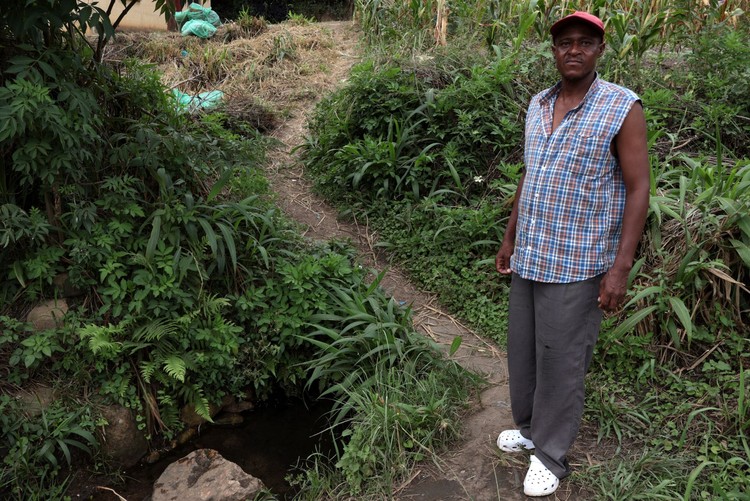
Cornelius Thutshini stands at a spring where households in the rural area of Mvutshini are forced to collect water as a water truck supplied by the municipality only comes to fill their water drums once every two weeks.
Water inequality
While the wealthier narrow coastal strip is getting by despite intermittent water outages, there has been no water in the communal taps in Mvutshini, a rural area on the South Coast of KwaZulu-Natal, for almost three years. In an area that receives about 1,000mm of annual rainfall, water is delivered by truck once every two weeks, according to residents of the scattered rural homesteads.
Cornelius Thutshini showed us a couple of blue plastic drums at the back of the family homestead he shares with two other adults and three children. Each drum holds about 200 litres and is placed by the roadside to be filled by the water truck. The family then carry the water 100 metres to the house with 20-litre buckets.
When the tanks are empty, they go down a steep path to use a spring in the valley below their house.
Thutshini says they believe this water is clean because it “comes from underground”, but no one knows for sure. However, after rains, the spring is unusable as it becomes muddy and they have to wait a day or two for it to clear.
Although none of the homes in the extended tribal lands have internal plumbing, there are communal taps. The one closest to Thutshini’s home no longer has a valve, and the path to it is completely overgrown. This is the case throughout the area, leaving people, mostly adolescents, to collect water from streams and springs in the many valleys. Some streams and springs are not as clean as the one near Thutshini’s home. The impact of hundreds of pit toilets in the area is unknown.
Busi Khumalo, who lives with her daughter and two grandchildren, aged 12 and 14, on the slope of a valley about a kilometre from Thutshini, said she was hospitalised eight months ago due to ongoing severe diarrhoea. She suspects the locally sourced water. She said the water truck that came two days earlier had missed the drums she put out. She has a car and drives to a shop to buy drinking water.
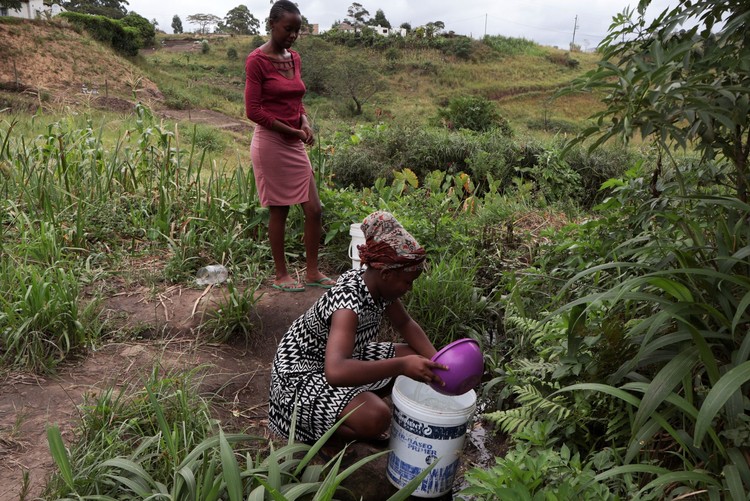
Teenagers Zanele Cele (foreground) and Lethokuhle Sima collect water for their household from a spring in Mvutshini, just inland from Ramsgate.
Urban issues
In Gamalakhe, a large township inland of Margate, homes have indoor plumbing and are connected to the municipal water supply, but unlike lower-lying Margate, there are water outages that last for days. Unlike rural areas people do not have access to streams and springs. What streams there are running through the hilly area are too dirty for domestic use, says local DA PR councillor Portia Nkoko.
When water outages last for days, Nkoko says she drives to the Ugu Sports and Leisure Centre about 1.5km from Gamalakhe to collect water.
She said water trucks don’t often come to Gamalakhe, and when they do, they are mobbed by crowds and forced to stop soon after entering the township, which has only one tarred entrance road.
Sifiso Cele, who doesn’t have a car, says he pays R40 for someone to drive him to a roadside tap two kilometres outside Gamalakhe. The tap, beneath a mango tree opposite the Grace Brick and Block company, is believed to be supplied by a borehole, although Nkoko said no one knew who it belonged to and no one charged for the water.
Cele, who lives in a state-subsidised house with his younger brother, said they struggle to pay for transport to fetch water, as neither of them are employed.
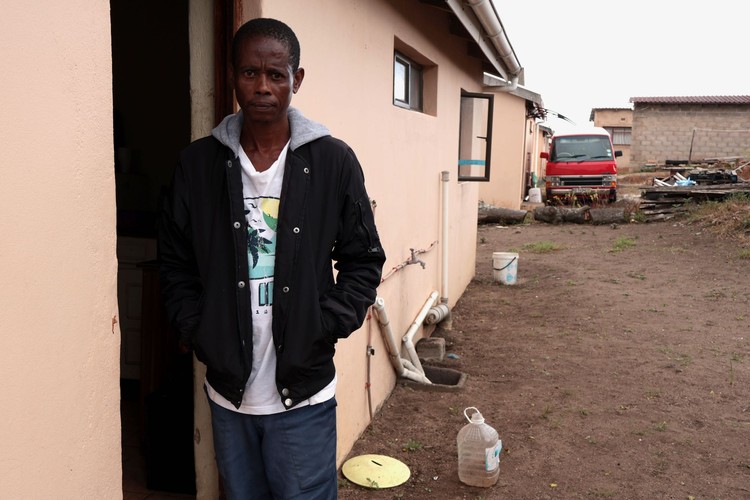
Sifiso Cele in Gamalakhe, inland from Margate, said there had been no tap water for three days when GroundUp visited in early March. Cele, who is unemployed, says if he runs out, he has to pay someone R40 to drive him to fetch clean water from a borehole outside the township.
A failed system
Anthony Turton, professor at the Centre for Environmental Management at the University of Free State, who lives in a housing estate within the Ugu District Municipality, in Southport, north of Port Shepstone, says the water system has failed. As an example, the water pressure at the entrance to the housing estate is too low for the fire hoses to operate and for the higher-lying houses to be able to operate appliances such as washing machines.
In an article he published on the fishing and local news site thesardine.co.za, he said there was sufficient pressure just 16 days out of 100.
“The system has failed by virtue of the fact that 80% of the time it fails to meet minimum useful pressure,” Turton told GroundUp.
The estate had to install water storage tanks and a pumping system to provide sufficient pressure, resulting in higher levies which some people struggled to afford. He said that given there was insufficient pressure where he was, a mere 50 metres above sea level, it was not surprising communities in higher lying areas inland did not receive water.
He said people with means had insulated themselves against the failed water supply system, while those who could not had to struggle with no or intermittent water provision. This has led to an increasing disparity between rich and poor, along with a collapsing middle class, he said.
Ugu District Municipality did not reply to emailed questions, and numerous calls to the municipal offices went unanswered.
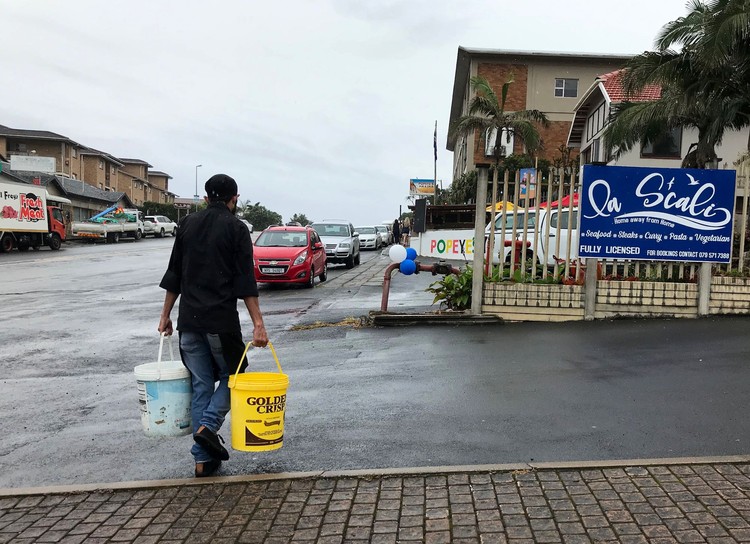
A waiter carries water to a Ramsgate restaurant during water outages during the December 2020 holiday season. He had collected it from the water storage tanks set up by the ratepayers association.





